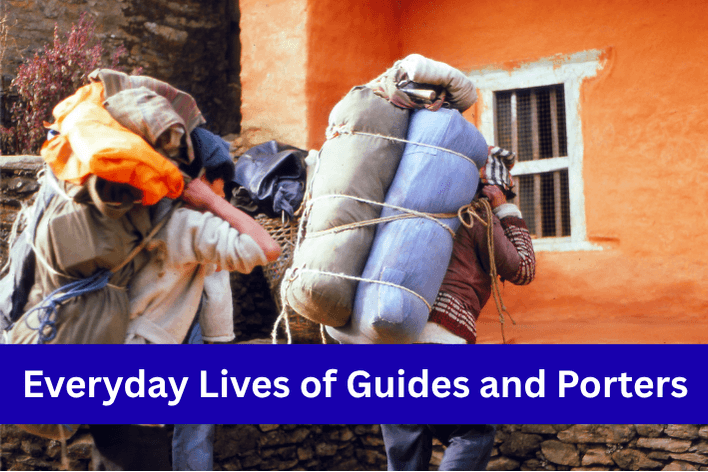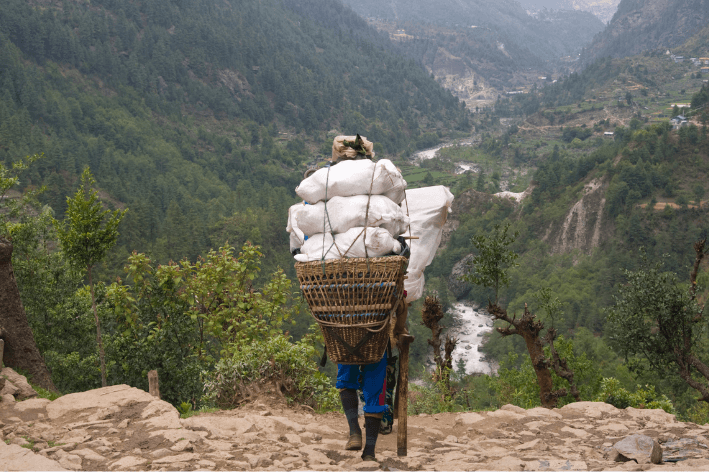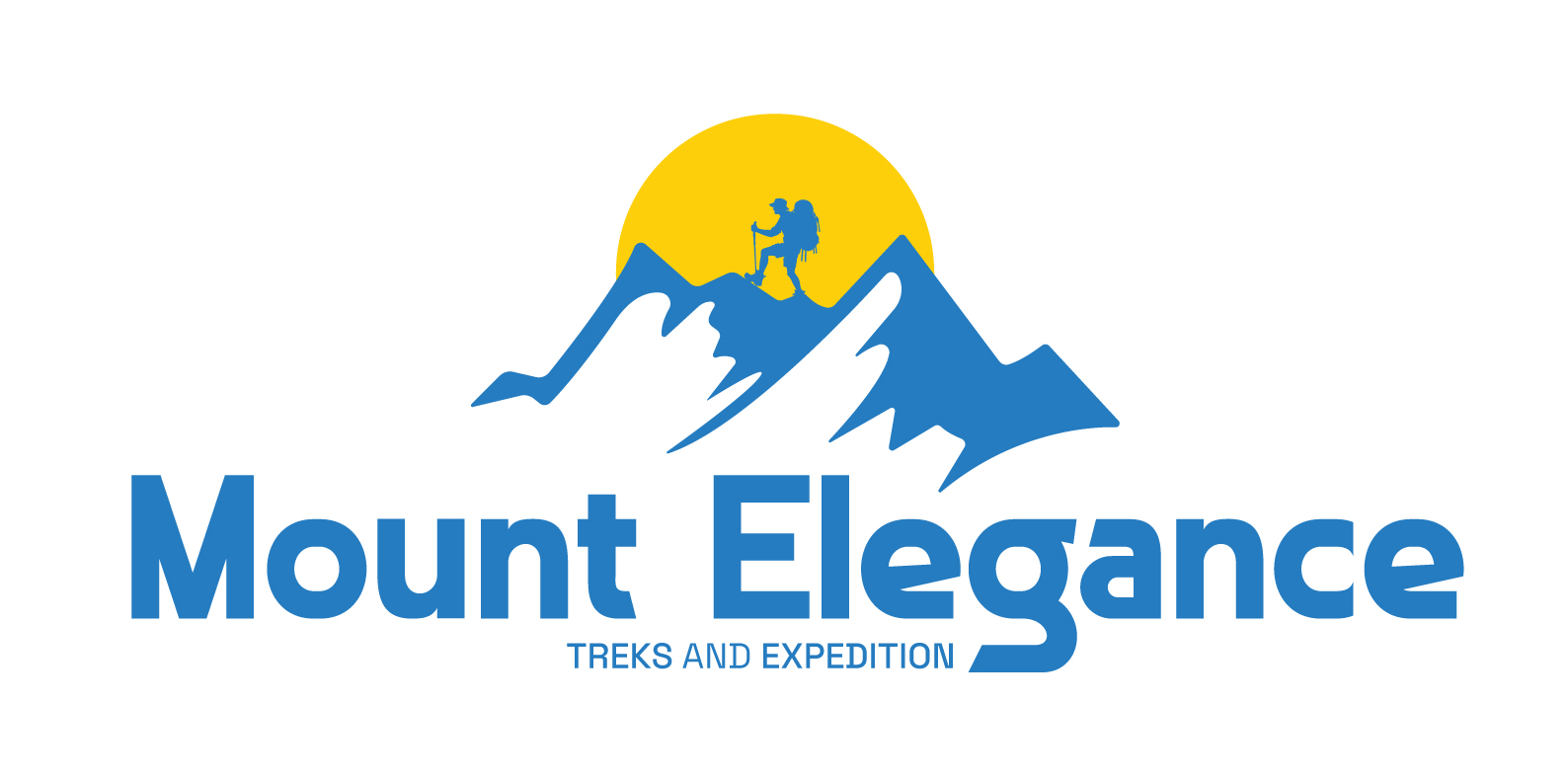Behind the Trek: Everyday Lives of Guides and Porters

Introduction: The Heartbeat of the Himalayas
Picture this: You’re huffing and puffing up a steep Himalayan trail, your legs burning from the altitude, and the snow-capped peaks of Everest teasing you from afar. Just when you think you can’t take another step, a warm smile and a steady hand appears beside you. “Bhai, slow down—breathe with the mountain,” says your guide, his voice calm like the rushing rivers below. Or maybe it’s your porter, effortlessly balancing a 30-kilo load on his back while cracking a joke to lighten the mood.
These moments? They’re magic. But behind every epic trek in Nepal lies the real story—the lives of guides and porters, the quiet forces who turn our wild dreams into unforgettable realities. At Mount Elegance Treks, we’ve walked these paths countless times, and we’ve seen firsthand how these folks aren’t just employees; they’re family, storytellers, and the soul of the adventure.
In this post, we’re pulling back the curtain on the everyday lives of porters and guides in Nepal. We’ll dive into their routines, the grit they bring to the trails, and why supporting them ethically makes your trip so much more meaningful. If you’ve ever wondered what happens when the tourists head back down, stick around. This isn’t just a blog—it’s a tribute to the people who make the mountains feel like home.
Table of Contents
- Who Are the Unsung Heroes of the Himalayas?
- A Day in the Life of a Trekking Guide
- Porters: The Backbone of Every Expedition
- Challenges They Face and How We Can Support Them
- Why Ethical Trekking Matters in Nepal
- Conclusion: Join the Journey with Gratitude
Who Are the Unsung Heroes of the Himalayas?
Let’s start with the basics. In Nepal’s trekking world, guides and porters are the unsung heroes who ensure you reach that breathtaking viewpoint without a hitch. According to the Nepal Tourism Board, trekking employs over 100,000 people in the country, with guides leading the way and porters carrying the weight—literally.
Guides are your navigators, cultural interpreters, and emergency responders rolled into one. They’re locals from mountain villages like Namche Bazaar or Ghandruk, trained through rigorous programs by organizations like the Trekking Agencies’ Association of Nepal (TAAN). Porters, often from even remoter Tamang or Sherpa communities, haul everything from tents to your forgotten snacks, making remote trails accessible.
But it’s not just about the job—it’s about legacy. Many come from generations of trekkers, passing down knowledge like family recipes. At Mount Elegance Treks, we prioritize hiring from these communities because we believe in building trips that uplift everyone involved. Curious about a specific route? Check out our Everest Base Camp Trek page to see how our guides make the difference.
A Day in the Life of a Trekking Guide
Ever wondered what your guide does when you’re not looking? Spoiler: It’s a blend of adrenaline, empathy, and endless cups of masala chai. Let’s break down a typical day on the trail, drawing from stories we’ve heard (and lived) during our Annapurna Circuit Trek adventures.
Morning Preparations: Rise with the Sun
The day kicks off before dawn. Guides like our veteran Ram Bahadur wake at 4 AM in a teahouse in Manang or Pheriche. First things first: a quick prayer to the mountain gods (a Sherpa tradition that’s equal parts spiritual and practical). Then, it’s inventory time—checking weather apps (yes, even in the Himalayas, there’s spotty 4G), packing emergency kits, and briefing the porters.
By 6 AM, they’re rustling up breakfast for the group: oats for energy, maybe some Tibetan bread. But the real work? Reading the room. Guides gauge who’s nursing a blister or battling altitude sickness, adjusting paces accordingly. It’s this intuition that keeps things safe—fact: The Himalayan Trekking Association reports that experienced guides reduce accident rates by 40%.
On the Trail: Eyes Everywhere, Heart in the Mountains
Mid-morning, the group hits the dirt. Guides lead from the front, pointing out rhododendron blooms or sharing folklore about Yeti sightings (half-joking, half-serious). They’re spotting trail hazards—loose rocks, sudden avalanches—while keeping spirits high with songs in Nepali or English pop hits.
Lunch is a picnic affair: dal bhat on the go, with time for birdwatching or a quick game of cards. Afternoon brings the tough climbs, where guides become cheerleaders. “One foot, then the other,” they’ll say, drawing from their own climbs of peaks like Island Peak. It’s exhausting, but rewarding—watching a trekkers’ face light up at Thorong La Pass? Priceless.
Evening Reflections: Stories Around the Fire
As dusk falls, camp setup begins. Guides coordinate tents, boil water for purification, and handle permits (a must for protected areas like Sagarmatha National Park). Dinner’s communal: momos steaming over a kerosene stove, followed by debriefs. Here, the lives of guides shine—they share tales of their villages, teaching you a phrase in Gurung or the art of making nettle soup.
By 9 PM, it’s lights out. But sleep? Fleeting. Guides stay vigilant, listening for wind shifts or group coughs signaling altitude issues. It’s a 24/7 gig, but as Ram says, “The mountains give back what you put in.”

Porters: The Backbone of Every Expedition
If guides are the brain, porters are the heartbeat—and the muscle. These folks carry loads that would make a gym rat weep, all while grinning through the grind. In the everyday lives of porters, resilience is key. We’ve partnered with porters like Tenzing from Solukhumbu for years on our Manaslu Circuit Trek, and their stories humble us every time.
Loading Up and Setting Off: The Weight of the World
Dawn patrol for porters means 5 AM weigh-ins. Regulations cap loads at 30 kg (thanks to TAAN advocacy), but that’s still hefty—your duffel, group gear, even the cook’s pots. Strapped with a tumpline (a headband that distributes weight), they set off last, ensuring trekkers don’t lag.
Fun fact: Porters cover 15-20 km daily at altitudes over 4,000 meters, faster than most of us could on flat ground. It’s generational know-how; many learn from fathers who summited Everest support runs.
Navigating the Rugged Paths: Strength in Silence
On the move, porters are a symphony of efficiency. They sidestep mule trains on narrow ledges, ford icy streams barefoot, and pause only for a quick smokeless tobacco chew. Banter flows—jokes about “lazy tourists” (all in good fun)—but focus never wavers. Rain? They wrap loads in tarps. Snow? Extra layers from recycled gear.
Studies from the Nepal Research Center highlight their superhuman endurance, adapted from high-altitude genes. Yet, it’s the quiet pride that sticks: arriving at camp first, unloading like pros, ready for round two tomorrow.
Camp Life and Camaraderie: Bonds Forged in the Wild
Evenings are for unwinding. Porters huddle around dung-fueled fires, playing dice or singing folk tunes. Meals are simple—rice, veggies, endless chai—but shared with laughter. Here, hierarchies fade; trekkers join in, learning to whistle a Sherpa melody.
Off-duty? They dream big: Saving for kids’ schooling or a new roof back home. At Mount Elegance, we ensure fair wages and insurance, because these bonds last beyond the trail.
Challenges They Face and How We Can Support Them
Life on the trails isn’t all panoramic views. Guides and porters battle harsh weather (think -20°C blizzards), health risks like hypothermia, and the toll of seasonal work—unemployment in monsoons hits hard. Overloading porters remains an issue, despite bans, leading to back injuries that sideline families.
But hope glimmers. Initiatives like the International Porter Protection Group (IPPG) enforce fair treatment, and agencies like ours provide gear, training, and rest days. You can help too: Tip generously, pack light, and choose operators committed to ethics. It’s how we honor the lives of guides and porters.
Why Ethical Trekking Matters in Nepal
In a world of bucket-list rushes, ethical trekking stands out. It sustains communities, preserves trails, and creates trips with soul. Opt for agencies vetted by TAAN, like Mount Elegance Treks, where every trek—from Ghorepani Poon Hill to Langtang Valley—prioritizes people over profits.
Unique perks? Our guides share off-trail gems: Hidden monasteries, homestays with locals. It’s trekking with purpose, leaving no trace but footprints—and fond memories.
Conclusion: Join the Journey with Gratitude
The lives of guides and porters remind us: Adventures aren’t solo quests; they’re woven with human threads. Next time you’re in Nepal, look closer—their stories are the real summit.
Ready to trek with heart? At Mount Elegance Treks, we craft personalized journeys that celebrate these heroes. Book your dream trek today or drop us a line for tailored advice. Let’s make the Himalayas echo with gratitude—your adventure awaits!
Tags: lives of guides and porters, Nepal trekking guides, ethical porters Nepal, Himalayan treks, Mount Elegance Treks
